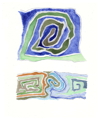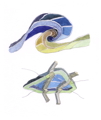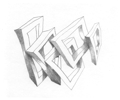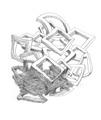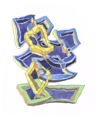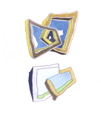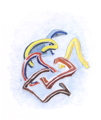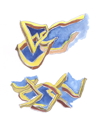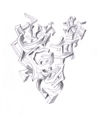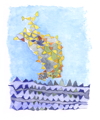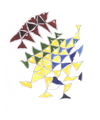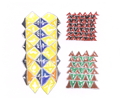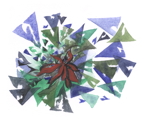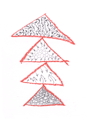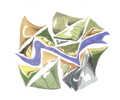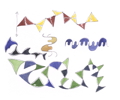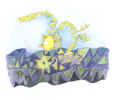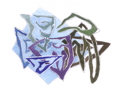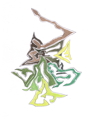
|
More from "The Exegesis of Philip K. Dick":
"Q: What is the goal (purpose) of all reality?"
"A: The harmonious fitting-together of everything (every part) into the unitary beautiful."
This fitting together into the unitary beautiful happens, for reasons PKD details, as the parts he calls ontogons convert themselves to phylogons. His description of the transition of ontogon to phylogon sounds similar to stories of spiritual journeys towards enlightenment and to the process that C. G. Jung called "individuation". The ontogons are our proper selves, the phylogons, our archetypes or higher selves.
I want to expand more on this transition dynamic, but before I can unpack his notes on the struggle for wholeness, I need to first try and describe the goal, the whole, or what PKD also refers to as VALIS (Vast Active Living Intelligence System). I mean really, he was so cut out to be a science fiction writer.
An entry written January 30, 1980 [82:1], puts these ideas together. In reference to VALIS...
"A unitary web in process, self-initiating, in which I participate and and whose aspect as it pertained to me my mind determined conscious, all times simultaneous."
A timeless consciousness. A description of the whole, not as a physical presence but as a process. The entity also sounds eerily like the world wide web. Skynet anyone?
He continues by considering VALIS in relation to the ontogons and phylogons.
"It took an infinity of forms, all of which came into being and passed away (ontogons) leaving only constants (phylogons) as part of the structure - hence it was in flux like a self-perfecting organism. The complexity of the structure increased upward (i.e. toward the macro) and downward (toward the micro) with each passing second."
It is clear from this description that PKD saw our everyday objects, or ontogons, as the most ephemeral aspect of VALIS. And note, the ontogons are the only part of this system that positivists acknowledge as reality. But in the vision of PKD, it is the archetypes, following Plato, the immeasurable ideals, that persist.
|

